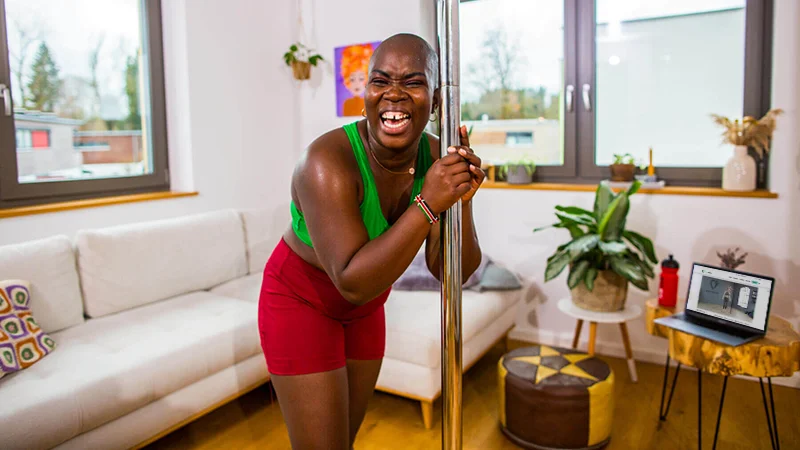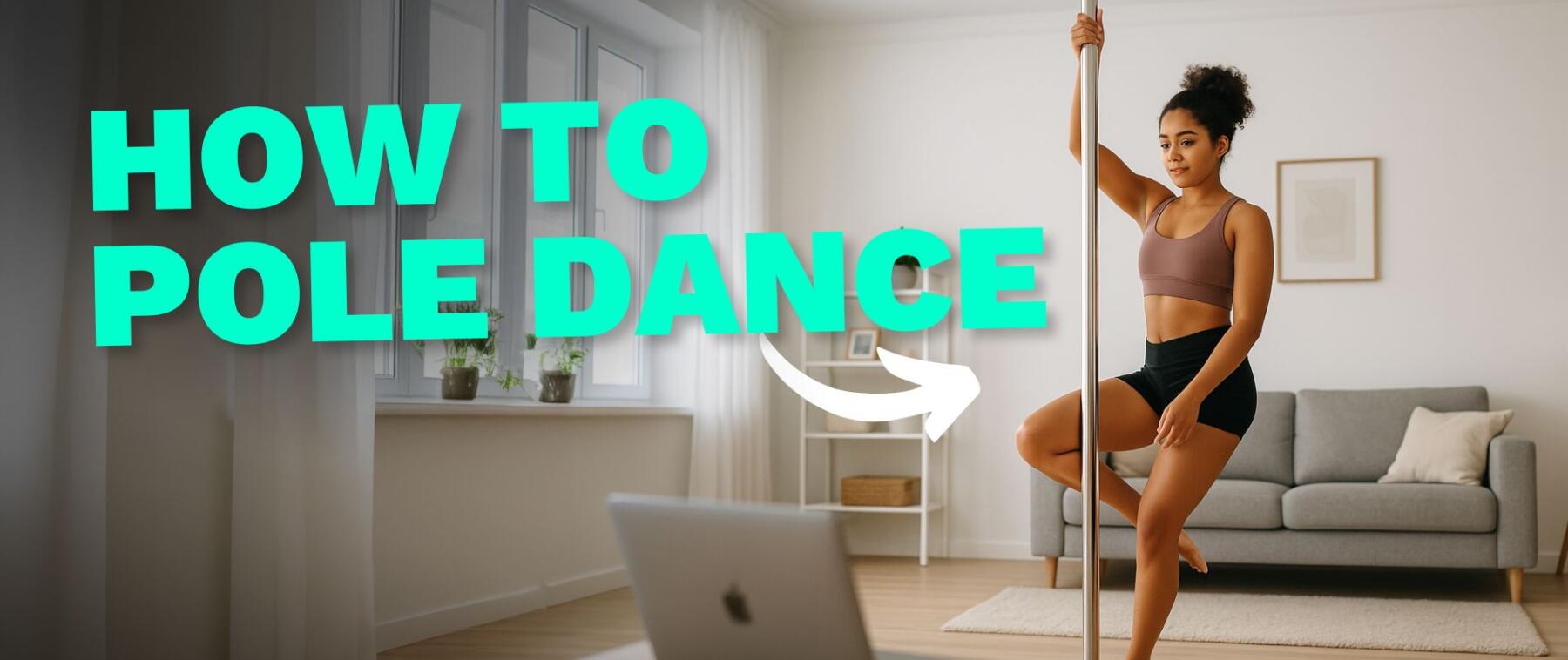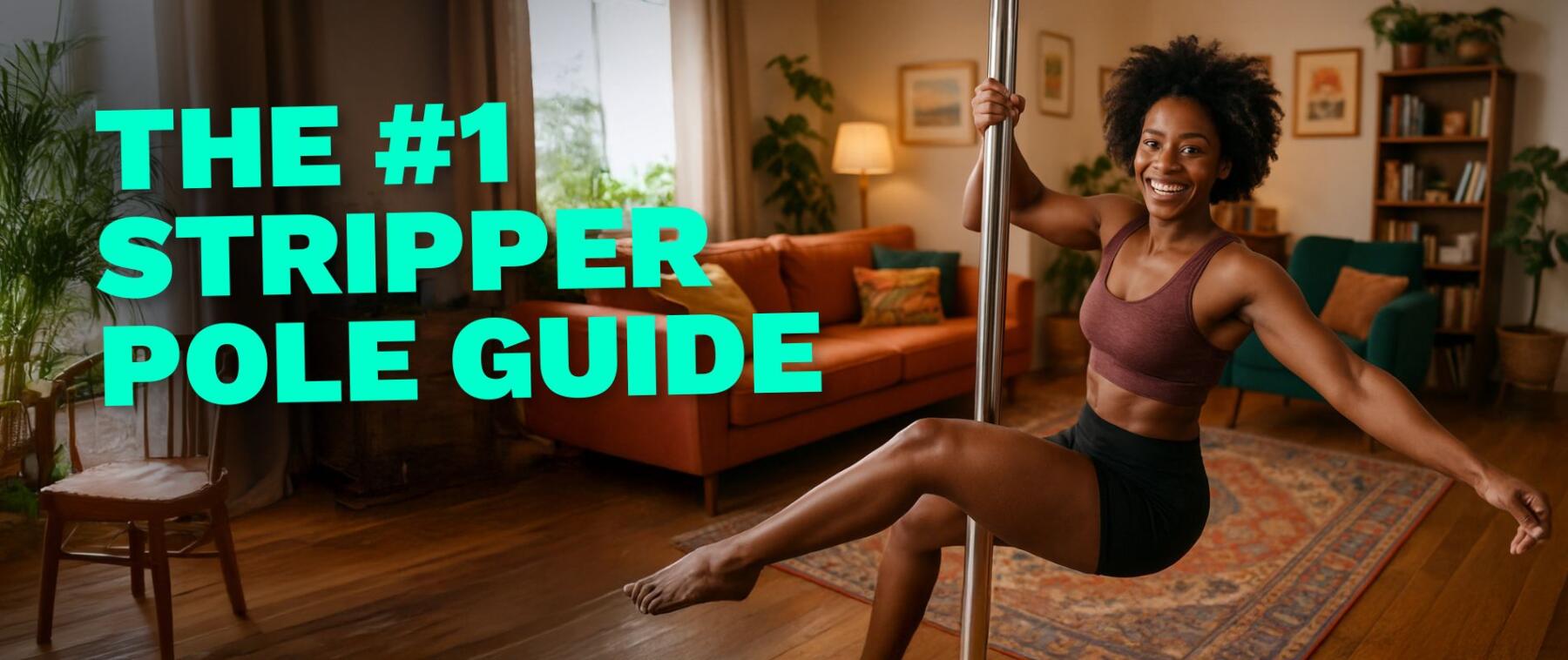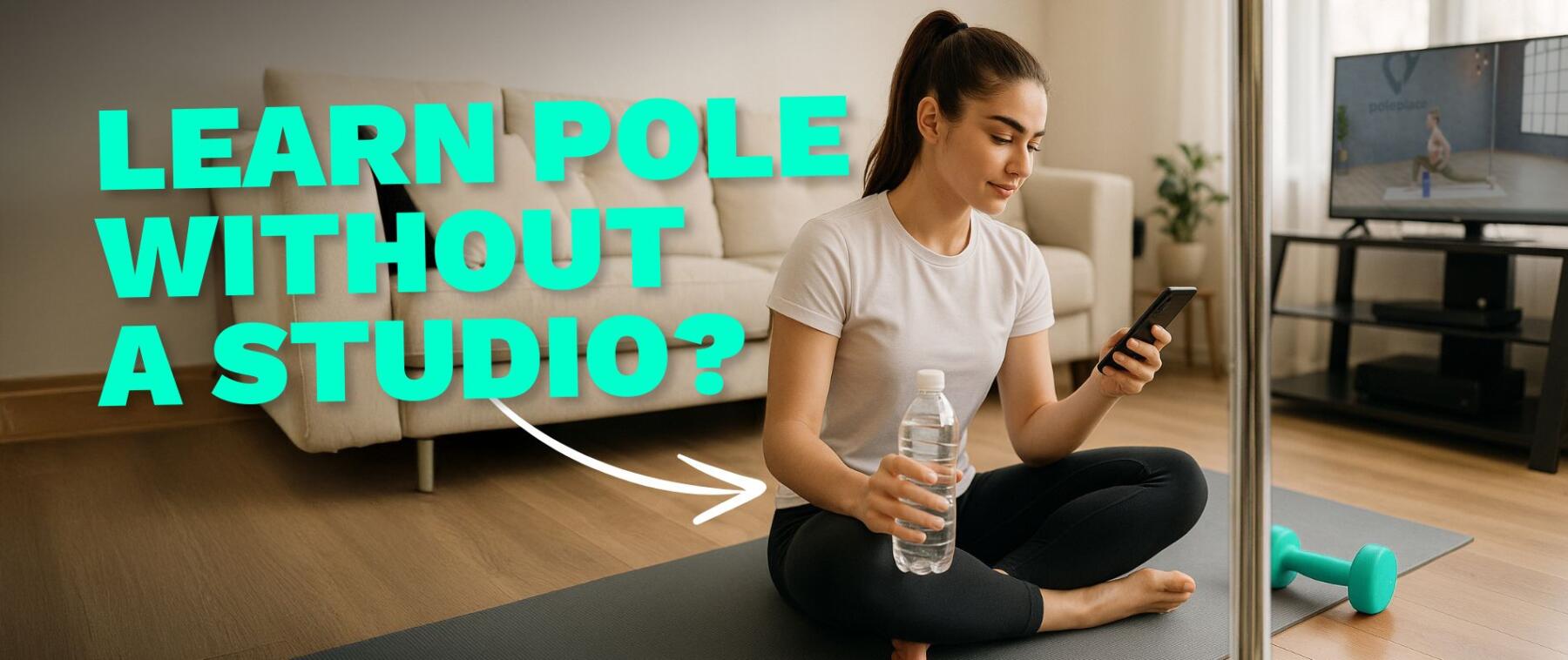The Ultimate Guide to Pole Dance: What It Is & Why It Empowers Millions
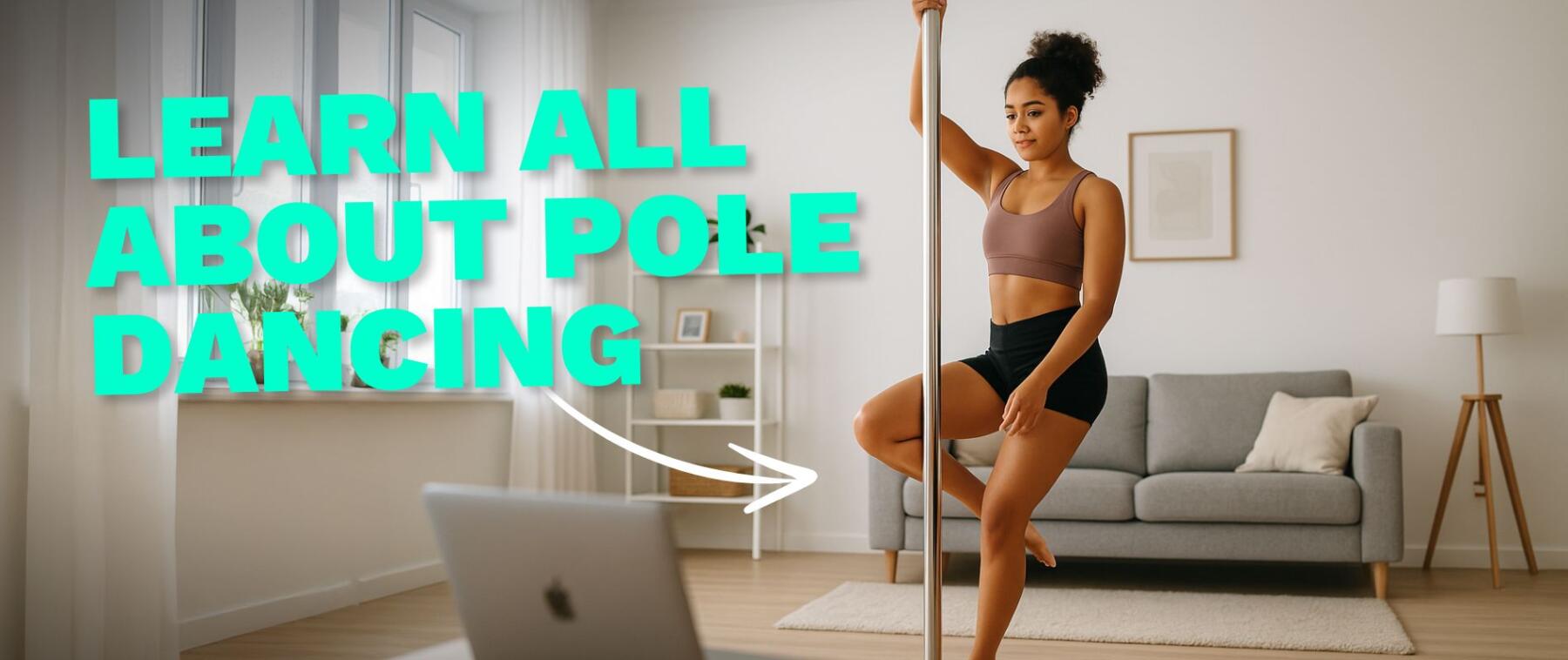
AUTHOR:
DATE:
July 16, 2025
Pole dance is more than just a fitness trend — it’s an empowering, artistic and physically demanding discipline with deep cultural roots and a growing global community. In this comprehensive guide, we’ll take you through everything you need to know about pole dance: its history, styles, health benefits, misconceptions, how to get started, and why it’s become a safe space for so many people around the world.
What is Pole dance?
Pole dance combines acrobatics, strength training, flexibility, dance, and self-expression — all performed with a vertical pole. While it’s often associated with sensual movement, modern pole dance has evolved into a diverse discipline that spans fitness, sport, and art.
Whether practiced for fun, competition, personal growth, or empowerment, pole dance allows individuals to explore what strength and confidence mean to them — on their own terms.
What makes pole dance truly unique is how personal it is. No two dancers move the same way. Some bring fire, some bring softness, and others bring their own rhythm and story to every spin. It’s a sport, yes. But it’s also an act of self-expression.
The Origins and History of Pole dance
Pole dance has complex and sometimes controversial roots. Its modern form draws influences from:
- Traditional Indian pole sports like Mallakhamb, which used vertical poles for strength and agility training as far back as the 12th century.
- Chinese pole, a circus discipline with dynamic acrobatic movements performed on two poles — typically seen in traditional and modern circus acts.
- Exotic dance and striptease culture, particularly from North American clubs in the 20th century, where performers used the pole as part of expressive and sensual performances.
It’s important to acknowledge and respect the full history — both athletic and erotic. While some fitness communities still try to distance themselves from the strip-club roots, a growing number of dancers are reclaiming the sensual side of pole as something powerful, not shameful.
Today, pole dance is a celebration of diversity — of backgrounds, styles, and reasons for dancing. Some come for strength, some for softness, and others for self-love. But all belong.
Pole dance in Today’s Pop Culture
Pole dance is no longer hidden in the shadows — it’s front and center in global pop culture, where it’s being redefined by artists, athletes, and everyday women alike. What once carried stigma is now being reclaimed as a symbol of strength, sensuality, and creative expression.
You are currently viewing a placeholder content from Default. To access the actual content, click the button below. Please note that doing so will share data with third-party providers.
More InformationIn recent years, music videos, movies, and viral social media trends have brought pole dance into the mainstream. Think of Jennifer Lopez’s unforgettable Super Bowl performance, where she used the pole not just as a dance prop but as a statement of power and athleticism. Or FKA Twigs and Cardi B — artists who openly embrace pole dance as part of their identity, turning it into an art form that commands respect.
On platforms like Instagram and TikTok, millions of women share their pole journey. And the message is clear: You don’t have to be a performer, a gymnast, or even super fit to belong. You just have to show up — as you are. Pole dancing is being seen less as a spectacle, and more as a healing practice, a way to reconnect with your body, and a space for self-discovery.
This shift is huge. Because for decades, women were taught to hide their sensuality, to shrink themselves, to follow rigid rules about what strength should look like. Today, pole dancing flips the narrative. It says: You can be soft and powerful. You can be sexy and serious. You can move for yourself — not for the male gaze.
Of course, stigma still exists. Some people will always reduce pole to old stereotypes. But for the growing community of pole dancers around the world, it’s become a safe space — not just to move, but to feel seen. And that’s what makes it revolutionary.
So whether it’s on a stage, in a bedroom, at home in front of a mirror, or in a class full of strangers — pole dancing today is about ownership. Of your story. Of your body. Of your power.
Different Styles of Pole dance
Pole dance isn’t one-size-fits-all. Depending on your background and goals, you might be drawn to one of these main styles:
- Exotic Pole dance: Emphasizes heels, flowy transitions, floorwork, and sensual expression. Inspired by club performances, but deeply artistic and often theatrical.
- Pole Fitness: Focuses on athleticism, tricks, strength-building, and conditioning. You’ll see impressive holds, spins, and flips. Great for people who love to test their physical limits.
- Artistic/Flow Pole: This style is all about connection — to music, to emotion, to movement. Think of it as storytelling on the pole. Often barefoot and fluid.
- Sport Pole: Regulated by competitions and championships. Moves are scored based on difficulty and execution, similar to gymnastics or figure skating.
Many dancers blend styles or switch between them depending on their mood or intention. There’s no “right” way to pole — only your way.
Pole dance Benefits: Body, Mind & Confidence
Here’s what pole dancing can do for you:
- Build functional strength: Pole training develops full-body strength, especially in the core, back, arms, and grip — without needing a single dumbbell.
- Improve flexibility and coordination: You’ll naturally increase mobility, balance, and control through spins, leg holds, and split-based tricks.
- Reduce stress: Pole dance activates your body and quiets your mind. The movement becomes meditative, helping you disconnect from daily stressors.
- Boost self-esteem: The moment you nail your first spin or climb, you feel invincible. And yes, wearing tiny shorts and heels in your own home can be incredibly empowering.
- Create community: The global pole community is one of the most inclusive, supportive, and non-judgmental fitness spaces you’ll find. We hype each other up, not tear each other down.
Beyond the physical, many people say pole dance helps them reconnect to their bodies — especially after trauma, burnout, or long periods of self-doubt. It’s not just about building muscle; it’s about rebuilding your relationship with yourself.
Common Misconceptions About Pole dance
“Isn’t pole dance just for strippers?” Let’s be clear: pole dance has roots in strip culture, and that legacy should be celebrated — not erased. But pole dance today is incredibly diverse and practiced by people of all genders, ages, and backgrounds for all kinds of reasons: fitness, healing, expression, community, fun.
“I’m not strong/flexible/thin enough to start.” This is one of the most harmful myths. Pole dance is for every body. You can start with zero strength, zero flexibility, and zero experience. Progress comes with time, and the most important thing is just to begin.
“It’s just a trend.” Pole dance has been around for centuries. What’s new is the visibility — and that’s a good thing. The more people see pole as a valid form of movement and empowerment, the more inclusive it becomes.
How to Start Pole dancing
You can start pole dancing in a studio or from home. Here’s what you need to know:
At a Studio:
- Look for beginner-friendly classes
- Wear shorts (skin helps with grip)
- Bring water and be ready to go barefoot or wear heels (depending on style)
- Don’t be afraid to ask questions — instructors are used to nervous beginners
At Home:
- Invest in a safe pole (Lupit Pole or X-Pole are great options)
- Find online tutorials or platforms like POLEPLACE with structured beginner programs
- Create enough space and use a crash mat
- Film yourself to track your progress (and see how far you’ve come!)
Why POLEPLACE is the perfect starting point
If you’re intimidated by studios or just prefer to train privately, POLEPLACE is one of the most welcoming platforms to begin your journey. It offers:
- 400+ tutorials for all levels
- Regular live classes with Q&A
- A 12 week starter course
- A supportive, inclusive community
- Realistic, non-judgmental teaching approach (Floor-Stand-Air Method™)
- A safe space for all genders, bodies, and identities
It’s built around the idea that you don’t need to be strong or flexible to start. You just need the courage to try. And once you do? You’ll never look back.
Frequently Asked Questions (FAQ)
Is pole dance a good workout?
Yes — it combines strength training, cardio, and flexibility in one. Expect to get stronger and more mobile while having fun.
Can I learn pole dance with no experience?
Absolutely. Many people start with zero athletic background. Programs like POLEPLACE are made for total beginners.
Do I need to wear heels?
Nope. You can dance barefoot, in socks, or in heels — whatever makes you feel confident and safe.
Is pole dance suitable for men?
Yes! Pole dance is for everyone — all genders, all identities, all ages.
What kind of pole should I get?
We recommend a stainless steel or chrome pole from Lupit Pole, because it is the perfect match of price and quality, especially for beginners. And with POLEPLACE10 you safe 10% on your first pole. Check our full guide here: How to choose your first pole
Can I get injured?
Like any sport, pole dance carries risks — but if you warm up properly, follow instruction, and use crash mats, you’ll stay safe. Progress slowly and listen to your body.
How often should I train?
2–3 times per week is a great start. Recovery is important too — especially when building grip and upper body strength.
Is pole dance expensive?
It depends. Studios can be pricey, but at-home training is affordable in the long term. A one-time investment in a good pole and a monthly POLEPLACE membership is often way cheaper than studio classes.
Is there an age limit?
No. We’ve seen amazing pole dancers start in their 40s, 50s, and even 60s. Age is not a limit — it’s just a number.
Final Thoughts
Pole dance is more than a workout. It’s a journey of strength, expression, and empowerment. Whether you want to feel sexy, strong, or simply try something new, there’s a place for you in this community. And when you’re ready for that first spin? We’ll be right here with you.
At POLEPLACE, we believe pole dance is for everyone. No judgment, no pressure — just your body, your rhythm, your power. Ready to discover what’s possible? Start today.
This content is for informational and educational purposes only and does not constitute individualized advice. It is not intended to replace professional medical evaluation, diagnosis, or treatment. Seek the advice of your physician for questions you may have regarding your health or a medical condition. If you are having a medical emergency, call your physician or 911 immediately.
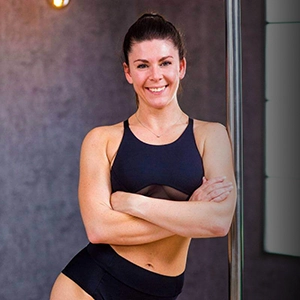
About Carmen 💕
Carmen discovered her love for pole dancing over 10 years ago — back when she was a student in a local studio. What started as a fun class turned into a full-blown passion and years of experience as a pole trainer.
Now she’s one of the proud co-founders of POLEPLACE — sharing her love for pole with a growing community of amazing humans around the world.
Share this article 💖
WHAT OTHERS LOVE
How to Pole Dance – at Home or in a Studio
Pole dancing is more than just fitness — it’s confidence, creativity, and a full-body workout all in one. Whether you’re [...]
The best Stripper Pole for your Training at Home
The Best stripper Pole for Beginners – Why We Chose Lupit PoleIf you're setting up your home for pole dancing, [...]
Choosing the Best Pole Dance Pole for Beginners
The Best Pole Dance Poles for Beginners: How to Choose the Perfect One for Your HomeStarting your pole dance journey [...]



